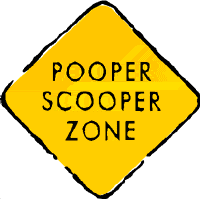Diarrhea is the passage of loose, unformed stools. In most cases, there is an increased number of bowel movements. With normal bowel movements, food in the small intestine takes about 8 hours to get to the colon. During this time, the bulk of it is absorbed. Eighty percent of water is absorbed in the small bowel. The colon concentrates and stores the waste. At the end, a well- formed stool is evacuated.
Transit time in the intestinal tract can be speeded up for a variety of reasons. When food passes rapidly through the bowel, it is incompletely digested and arrives at the rectum in a liquid state. This results in a large, loose, unformed bowel movement. This mechanism accounts for the majority of acute diarrheas of short duration.
In attempting to narrow the search for the cause of a diarrhea, it is important to decide whether the ailment is located in the small intestine or colon. Begins by examining the color, consistency, odor and frequency of stools, as well as the condition of the dog:
COLOR: Yellow or greenish stool – indicates rapid transit (small bowel).
Black, tarry stool – indicates bleeding in the upper digestive tract.
Bloody stool – red blood or clots indicate bleeding in the colon.
Pasty, light-colored stool – indicates lack of bile (liver disease).
Large, gray, rancid-smelling stool – indicates inadequate digestion or absorption (malabsorption syndrome).
CONSISTENCY: Watery stool – indicates small bowel wall irritation (toxins and severe infections).
Foamy stool – suggests a bacterial infection.
Greasy stool – often with oil on the hair around the anus: indicates malabsorption.
Excessive mucus – a glistening or jellylike appearance: indicates colonic origin.
ODOR (the more watery the stool, the greater the odor): Food like, or smelling like sour milk – suggests both rapid transit and malabsorption: for example, overfeeding, especially in puppies.
Putrid smelling – suggests an intestinal infection.
FREQUENCY: Several in an hour, each small, with straining – suggests colitis (inflammation of the large bowel).
Three or four times a day, each large – suggests malabsorption or small bowel disorder.
CONDITION OF DOG:Weight loss, malnutrition – suggests small bowel disorder.
Normal appetite, minimal weight loss – suggests large bowel disorder.
Vomiting – small bowel origin, except for colitis.
Most cases of diarrhea is caused by irritation of the bowel lining from ingested substances or infectious, agents. Any sudden change in your dog’s diet, drinking unfamiliar water, or ingesting toxic substances may cause diarrhea. Some dogs that are allergic to certain foods may also get diarrhea as well. Even dogs that get overly excited either negatively or positively can suffer diarrhea.
Diarrhea is a symptom, not a disease. The first step is to find and remove the underlying cause, if possible. Most cases of diarrhea can be treated at home. Withhold all food for 24-48 hours. Feed dog with small amounts of boiled hamburger with one to two parts cooked rice (discard broth). Continue the bland diet for three days, even though the dog seems well. An anti-diarrhea medication may also be necessary.
A diarrhea that persists for more than 24 hours, a bloody diarrhea and diarrhea accompanied by vomiting, fever and other signs of toxicity shouldn’t be allowed to continue. Consult your Vet immediately.
Colitis is inflammation of the large intestine. It is responsible for about half the cases of diarrhea in dogs. There are a number of different types of colitis and numerous causes. Because digestion and absorption of nutrients occur in the small intestine, colitis usually has little effect on the dog’s general health and nutrition. Colitis is complicated and requires veterinary diagnosis and management.
In malabsorption syndromes the dog doesn’t digest, or doesn’t absorb, food in the small intestines. These conditions are not common. When present, they are caused by pancreatic disease, liver disease, or injury to the lining of the intestinal tract from a prior infectious enteritis.
Dogs with a malabsorption problem are unthrifty and undernourished despite a large appetite. Consult your Vet for diagnosis and treatment.

No comments:
Post a Comment